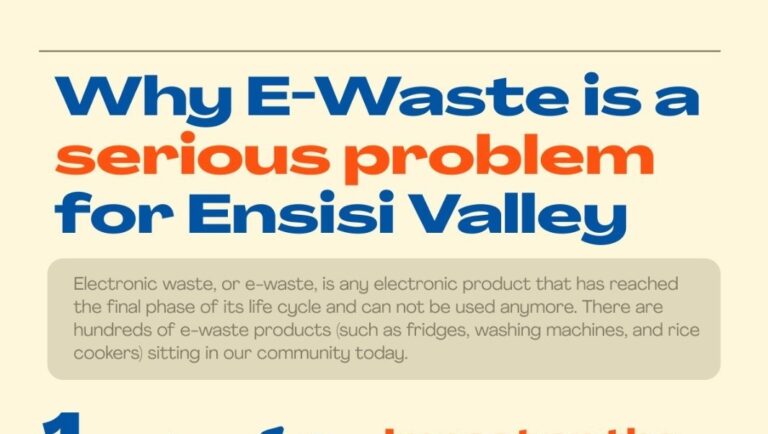News - Nov 8, 2024 Tackling E-Waste Management in Ensisi Valley: A Behavioural Change Initiative in Papua New Guinea

Papua New Guinea (PNG), like many Pacific Island nations, faces growing challenges in handling the issue of e-waste management, particularly in Ensisi Valley, a suburb of Port Moresby.
Improper disposal of e-waste, including burning and burying, is leading to significant health hazards and environmental degradation, as toxic chemicals are released into the air and soil.
Despite existing, yet unreliable, waste collection services, there is a lack of dedicated infrastructure for e-waste, and community members are often unaware of the proper handling and disposal methods.
This project aims to strategically address these gaps, aligning with the broader goals of the PacWastePlus program to enhance waste management systems and reduce harmful environmental impacts across the Pacific. The goal of this project under PacWastePlus is to implement a behaviour change initiative aimed at improving e-waste management specifically in Ensisi Valley.
Through community engagement, key insights were identified: although many people try to repair electronics before discarding them, improper disposal methods are still widespread; Community attitudes revealed there is little infrastructure for e-waste recycling; and e-waste is often seen as a nuisance rather than a resource.
This research informed the design of a tailored intervention, “Don’t Let Your E-Waste Go to Waste,” which combines community engagement with strategic communications to raise awareness of the dangers of improper disposal. The project is reframing e-waste as a potential resource, encouraging upcycling and sustainable reuse practices through targeted messaging.
A communications campaign to educate the community on the health risks associated with e-waste and provide practical and safe DIY upcycling solutions, leveraging community leaders and their presence on digital platforms such as Facebook and WhatsApp, alongside physical collateral has been launched. Next steps involve establishing a robust monitoring framework to measure the community’s engagement and behaviour shifts, ensuring long-term sustainability and impact.

